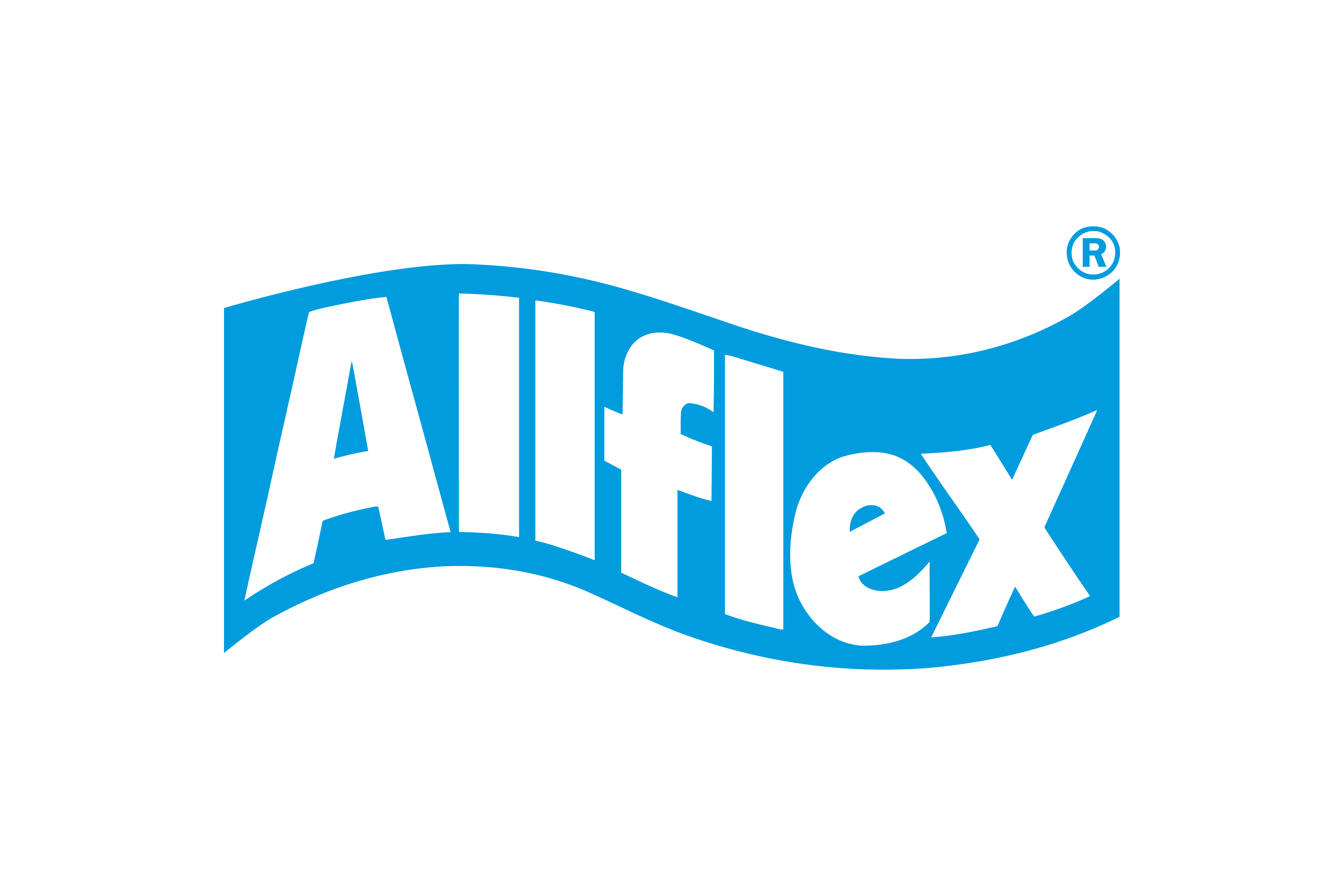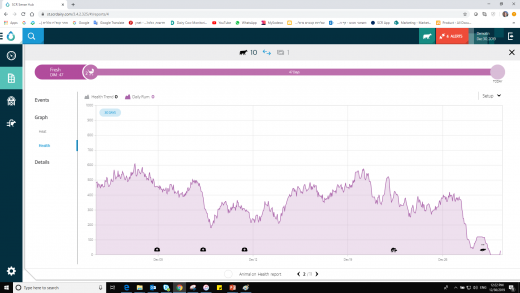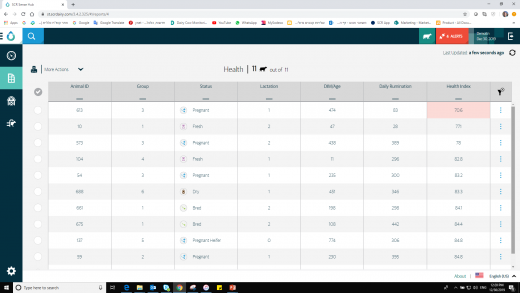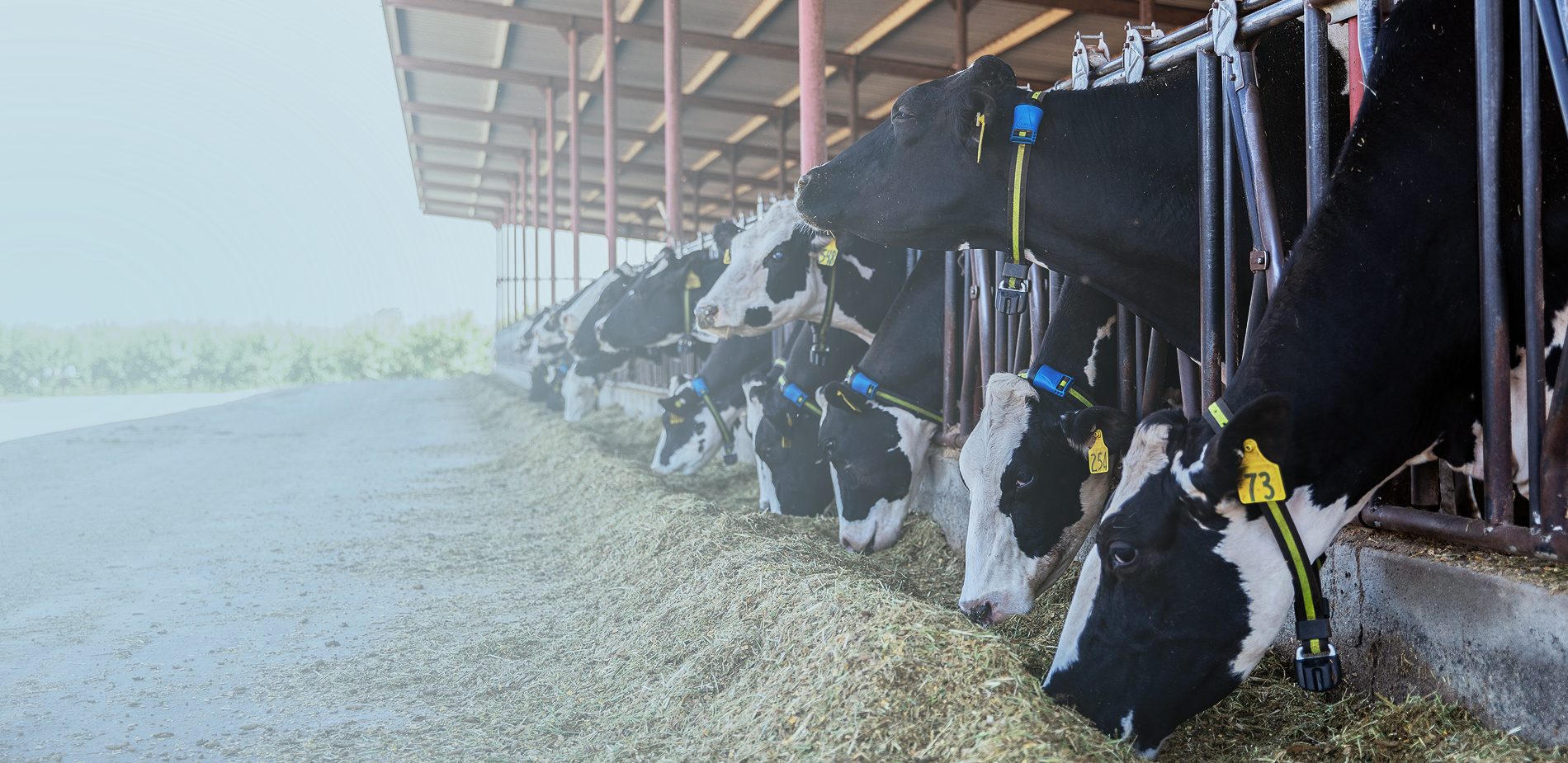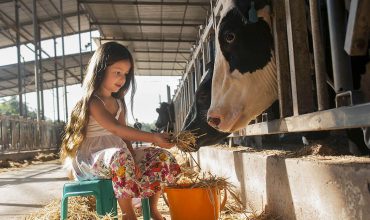Using smart technology that closely monitors rumination patterns for early diseases diagnostic and more effective treatment and recovery plan
Rumination, or cud-chewing, is directly linked to the physical health of dairy cows. In fact, veterinarians, nutritionists, and dairy producers rely on rumination analysis to indicate the health of dairy cows.
Rumination has a few key purposes, all of which impact dairy cow wellbeing. First, cud-chewing breaks down food in order to assist in its transfer to the rumen. It also increases the production of saliva, which acts as a buffer against the acids produced during the digestive process.
On average, dairy cows ruminate 500 ±100 min a day. A drop in rumination time can indicate problems with dairy cow health, like low feed intake or decreased rumen function. By using smart technology that closely monitors rumination patterns, you can diagnose diseases early and build a more effective treatment and recovery plan. Rumination monitoring can also provide early indications of feed-related issues and herd nutrition.
Here’s how rumination monitoring helps livestock health management:
Detecting Diseases Early
The earlier a disease is detected, the better the chances are for a quick recovery. Often, a drop in rumination occurs before the milk yield drops, making it difficult for dairy farmers to detect right away. While traditional methods of milk yield measurement and observation are slower to reveal potential diseases, a cow health monitoring system helps indicate health issues that aren’t apparent from visual observation alone.
This is evident in cases like clinical mastitis. A dairy cow with clinical mastitis will continue to produce a normal milk yield for some time, even while it’s rumination levels are dropping. Allflex’s smart livestock management technology can detect this drop in rumination long before the farmer identifies it in the milking parlor. This enables farmers and veterinarians to assess health problems right away and to prescribe immediate treatment.
Accurately Assessing Recovery
Once a disease is detected and treated, the monitoring system provides key insights into a cow’s recovery phase. Because rumination can return to normal before milk yield stabilizes, you’ll need monitoring technology to determine whether the treatment method was effective. While a return to normal rumination is a sign of proper treatment, low or unstable rates of rumination indicate that the cow might not be recovering and that you need to reassess the treatment plan.
Monitoring Cow Health After Calving
Rumination monitoring can also help assess the health of cows after calving. It’s critical to evaluate the wellbeing of cows immediately after calving since health issues can lead to problems in lactation, clinical disease, and eventually herd productivity.
Cows after calving with low feeding levels may be suffering from calving diseases, like Metritis or Ketosis. The Allflex Health Report displays cows’ health index in the first week after calving, allowing farmers to look for decreases in rumination levels. This, in turn, helps farmers focus on the cows that need the most attention post-calving and to respond with treatment before more serious diseases develop.
Assessing Herd Nutrition with Livestock Monitoring
Another benefit of a cattle health monitoring system is that it allows farmers to more accurately assess overall herd nutrition. The rumination process is directly related to the types of food cows eat. The long fiber part of the ration is broken down during the rumination process, enabling the rumen bacteria to digest the fiber. Because a greater amount of long fiber means a longer rumination time, rumination monitoring can indicate changes in ration composition.
A typical producer maintains a steady feeding schedule, in which there is a consistent rumination level among the herd. Any exceptions to this rumination level indicate a potential problem, whether it’s with the feed ration or the feed management system.
Allflex’s Group Consistency application makes it easy to monitor the feed consistency of each group. The application also helps farmers pinpoint the reasons for any inconsistencies, identifying deficiencies in feedlot space, water trough space, or lying down due to overstocking.
Conclusion
Livestock managing tools are essential for assessing the health of your herd. By detecting variations from normal rumination patterns and identifying these variations to farmers, Allflex’s rumination monitoring technology helps you detect and treat diseases as soon as possible, ensure cows are healthy after calving and maintain the nutrition and wellbeing of the herd as a whole.
